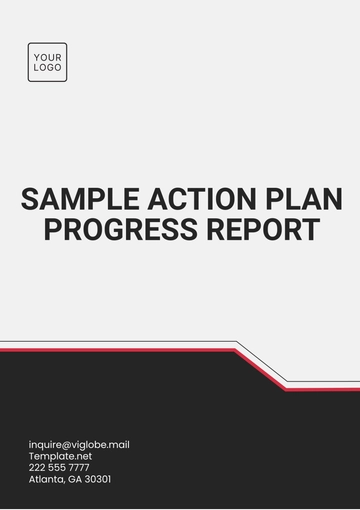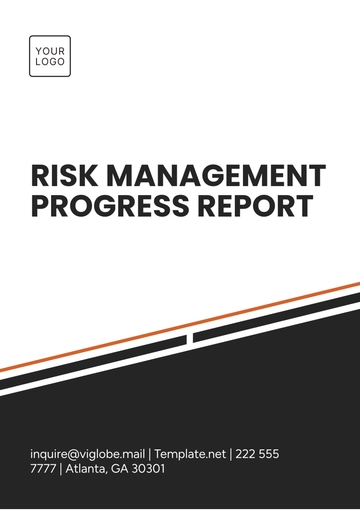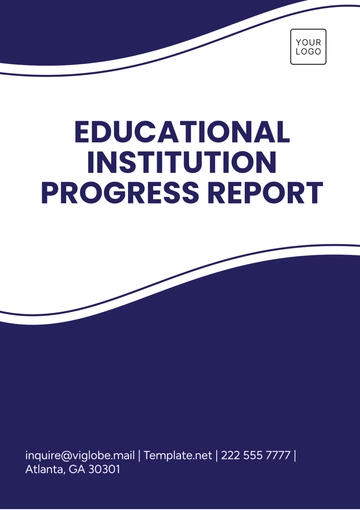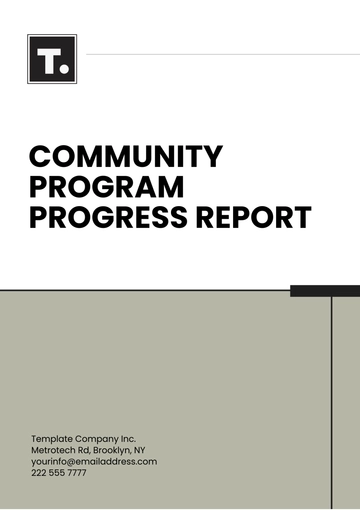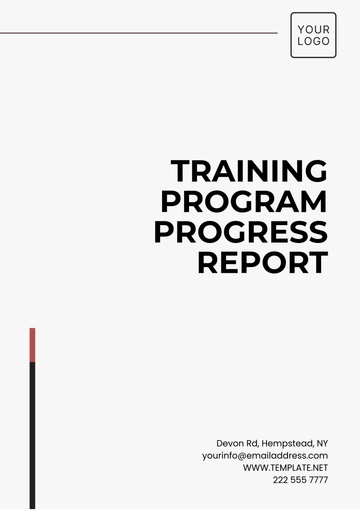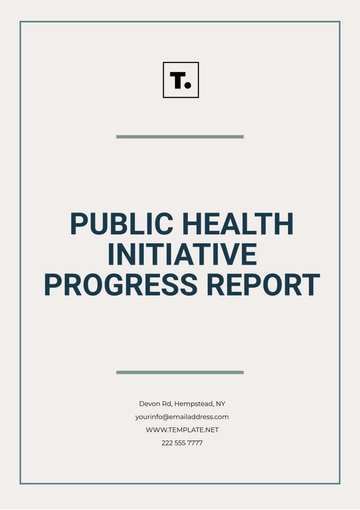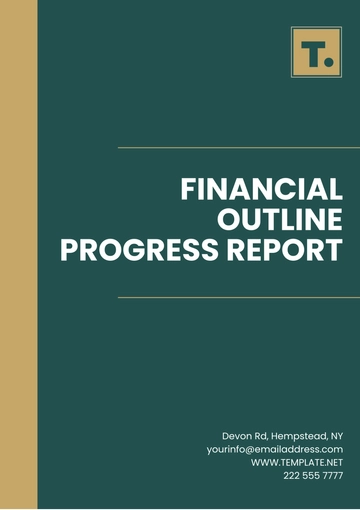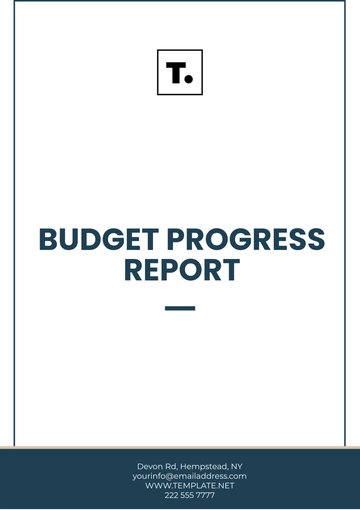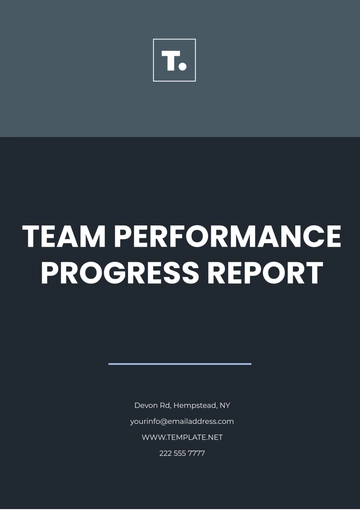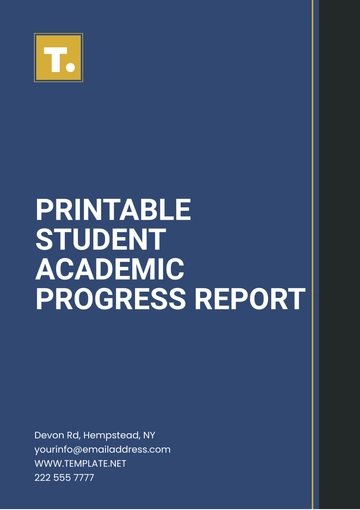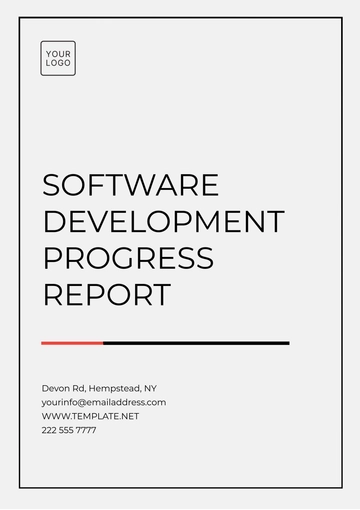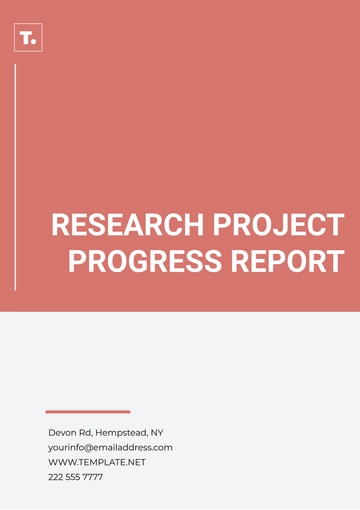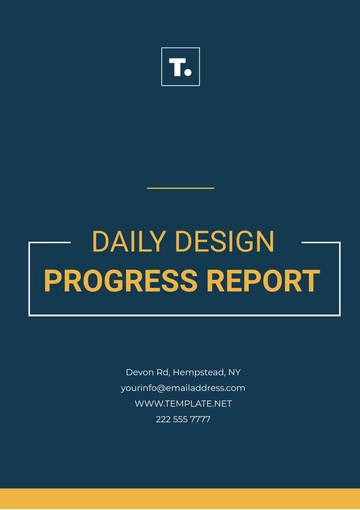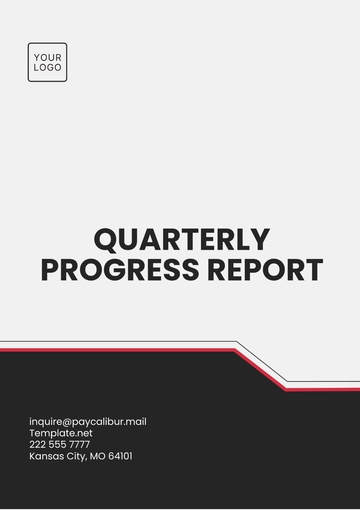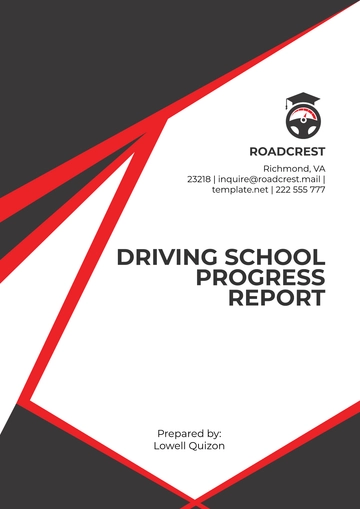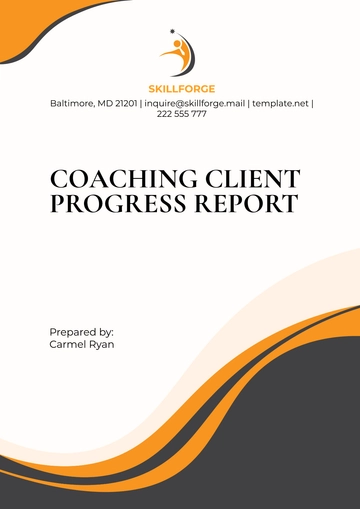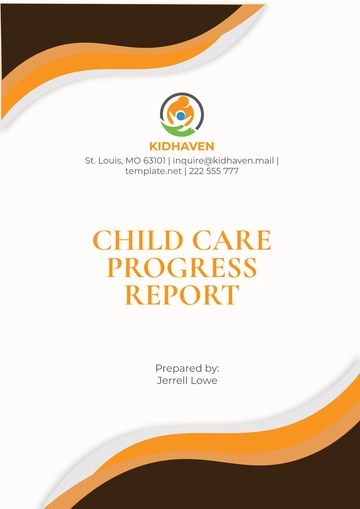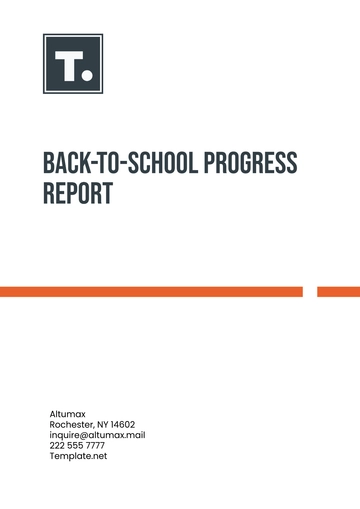Free Child Care Progress Report
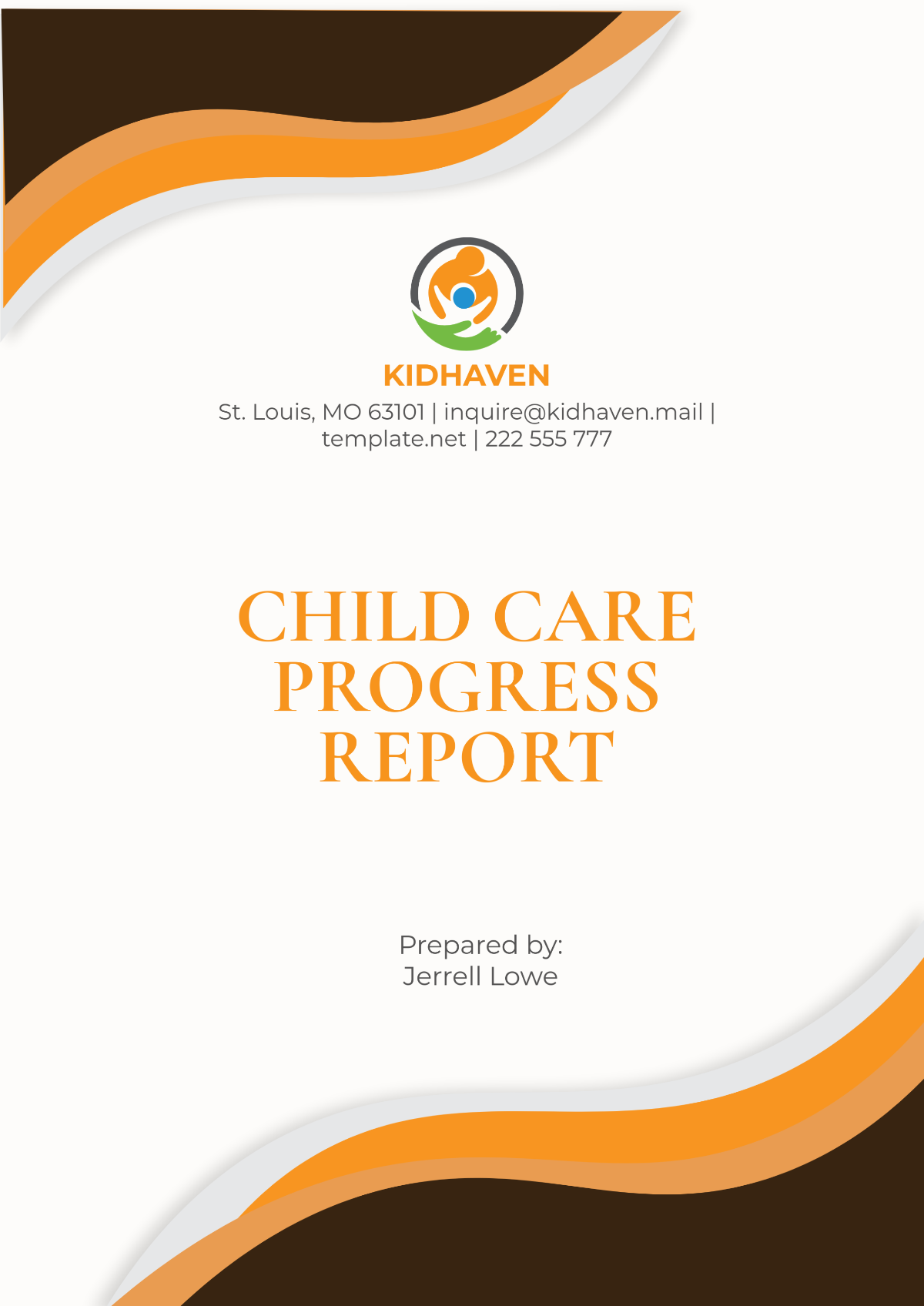
I. Introduction
A. Purpose of the Report
The Child Care Progress Report for the year [2050] is a comprehensive evaluation of the achievements, progress, and developmental milestones of children enrolled in [Your Company Name]'s child care program. This report is crafted to serve as an essential document for educators, parents, and administrators, providing a clear picture of each child's developmental journey over the year. By consolidating observations, assessment results, and feedback, the report highlights the program’s impact on fostering holistic growth.
The purpose of this report is multifaceted. It acts as a formal record of developmental achievements while also identifying areas requiring further attention. It ensures that parents and caregivers are well-informed about their child’s progress, and it provides actionable insights that educators can use to refine their approaches. In essence, the report is a testament to [Your Company Name]'s commitment to nurturing the physical, cognitive, social, and emotional well-being of every child under its care.
B. Scope of Assessment
The scope of this report encompasses a thorough evaluation of the children’s developmental milestones across key domains, including cognitive growth, physical fitness, social adaptability, and communication skills. Every child’s journey is unique, and this report reflects that individuality by capturing both group-wide patterns and specific achievements on an individual basis.
This assessment extends beyond academic readiness to include critical soft skills such as emotional intelligence, teamwork, and resilience. Through systematic observations, standardized tests, and continuous feedback, the program ensures that no aspect of a child’s development is overlooked.
The scope also involves assessing the effectiveness of various components of the child care program. For example, the impact of nutritional plans, the success of social activities, and the outcomes of personalized interventions are evaluated. This holistic approach allows [Your Company Name] to adapt and enhance its offerings, ensuring every child receives the care and attention they deserve.
II. Overview of Child Care Program
A. Program Objectives
[Your Company Name]'s Child Care Program is driven by a mission to nurture the potential of every child in a safe, supportive, and enriching environment. The program is guided by the following objectives:
Creating a Safe and Nurturing Environment: Every child thrives in an environment where they feel secure, valued, and respected. The program prioritizes safety measures, emotional support, and a welcoming atmosphere that encourages exploration and curiosity.
Fostering Holistic Development: The program takes a balanced approach to development, ensuring that cognitive, physical, emotional, and social needs are equally addressed. By focusing on the whole child, the program equips them with the skills needed to excel in various life aspects.
Building Lifelong Learning Skills: By cultivating curiosity and a love for learning, the program lays the groundwork for academic success and intellectual growth. Children are encouraged to ask questions, explore new ideas, and solve problems independently.
Encouraging Positive Relationships: Relationships are at the heart of the program. Children are taught the importance of teamwork, empathy, and effective communication, helping them form meaningful connections with peers and adults.
Preparing for Future Transitions: The program recognizes that early childhood is a critical stage for laying the foundation for future transitions, whether to kindergarten, school, or social settings. It ensures that every child is well-prepared for the challenges and opportunities ahead.
The program’s objectives are continuously reviewed and updated to reflect the latest research in child development, ensuring that every child receives the highest quality of care.
B. Services Offered
[Your Company Name] offers a wide range of services designed to meet the diverse needs of children and their families. These services are tailored to promote comprehensive growth and development:
Daily Learning Modules: These modules are carefully curated to engage children in activities that promote cognitive growth, creativity, and critical thinking. Examples include problem-solving tasks, creative arts, and exploratory play.
Nutritional Meals and Health Monitoring: A child’s physical health is as important as their intellectual and social growth. The program provides balanced meals crafted by nutritionists, alongside regular health assessments conducted by certified professionals.
Physical Activities: Physical well-being is prioritized through a variety of activities such as outdoor play, sports, and movement-based games. These activities not only enhance physical fitness but also teach children the value of teamwork and perseverance.
Social Activities and Cultural Events: Group activities such as themed events, holiday celebrations, and cultural exploration are integral to the program. These events provide children with opportunities to understand and appreciate diversity while fostering a sense of community.
Individualized Support: For children requiring additional assistance, the program offers personalized support plans. This includes one-on-one sessions with educators, speech therapy, or behavioral interventions, ensuring every child’s unique needs are met.
Parental Workshops and Seminars: Recognizing the critical role of families, the program organizes monthly workshops covering topics such as early childhood development, effective parenting strategies, and stress management.
By offering these comprehensive services, [Your Company Name] ensures that children are supported in every aspect of their growth, laying the foundation for a bright and successful future.
III. Child Development Areas Assessed
The Child Care Program at [Your Company Name] adopts a well-rounded approach to evaluating each child’s progress across various developmental domains. This comprehensive assessment framework ensures that every aspect of a child’s growth is monitored and nurtured.
A. Cognitive Development
Cognitive development focuses on the enhancement of mental processes such as memory, reasoning, problem-solving, and creativity. The program uses structured activities to evaluate and strengthen these abilities.
Critical Thinking and Problem-Solving:
Children are exposed to age-appropriate challenges, such as puzzles, sequencing games, and role-playing scenarios. These activities encourage logical thinking and the ability to approach problems systematically. For instance, a common exercise involves solving a maze or building a specific structure with blocks, promoting spatial reasoning and planning skills.Memory Retention:
Memory development is assessed through tasks like matching games and recall exercises, where children are asked to remember sequences of events or instructions. These activities are designed to enhance both short-term and long-term memory capabilities.Creativity and Imagination:
Opportunities for creative expression are provided through storytelling, drawing, and dramatic play. For example, a session might involve children imagining and drawing their version of a new planet, which helps boost imaginative thinking and narrative skills.Numerical and Logical Skills:
Early numeracy is a key focus, with activities like counting objects, simple math games, and recognizing patterns. These exercises help children develop foundational mathematical understanding that is essential for future academic success.
B. Physical Development
Physical development assessments are crucial in ensuring children achieve age-appropriate motor skills and maintain overall health and fitness.
Fine Motor Skills:
Activities such as cutting shapes with safety scissors, stringing beads, and tracing patterns are utilized to develop dexterity and hand-eye coordination. These tasks also prepare children for writing and other precision-based activities.Gross Motor Skills:
Outdoor play, sports activities, and obstacle courses are designed to enhance balance, strength, and coordination. For example, children might participate in relay races or group yoga sessions, which encourage teamwork while improving physical agility.Health and Fitness Metrics:
Regular health check-ups include monitoring height, weight, and body mass index (BMI). This ensures that children are meeting growth milestones and maintaining a healthy lifestyle. Additionally, group discussions on topics like the importance of exercise and balanced nutrition are incorporated to build awareness.
C. Social and Emotional Development
Social and emotional well-being is foundational to a child’s ability to interact effectively with others and manage their feelings. The program emphasizes fostering empathy, self-regulation, and relationship-building.
Peer Interaction and Teamwork:
Group activities, such as building a model together or acting out a story, provide children with opportunities to cooperate, share, and resolve conflicts. For example, a collaborative art project might require children to decide collectively on a theme, encouraging compromise and active listening.Emotional Awareness and Regulation:
Emotional intelligence is developed through storytelling sessions where children identify the emotions of characters or discuss their feelings about a specific event. Educators also guide children in recognizing and managing their own emotions in challenging situations, such as losing a game or waiting for their turn.Building Empathy and Respect:
Activities like “role-reversal games” help children step into another person’s shoes, fostering an understanding of diverse perspectives. These exercises encourage kindness and compassion, both essential for meaningful relationships.
D. Communication and Language Skills
Language and communication are fundamental to a child’s ability to express themselves and understand others. The program supports this development through a variety of interactive methods.
Speaking and Vocabulary Development:
Children are encouraged to participate in discussions, narrate stories, and describe their experiences. This not only expands their vocabulary but also builds confidence in verbal expression. A typical exercise might involve “show-and-tell,” where children bring an object from home and talk about its significance.Listening and Comprehension:
Educators engage children in activities that require active listening, such as following multi-step instructions or participating in group storytelling. These exercises enhance auditory processing and understanding.Early Literacy Skills:
Storytime sessions, phonics exercises, and letter-recognition games lay the groundwork for reading and writing. For example, children may participate in rhyming games to identify similar sounds, promoting phonological awareness.
IV. Evaluation Methodology
The program’s evaluation methodology is designed to capture a complete picture of each child’s growth while ensuring accuracy and inclusivity.
A. Data Collection Tools
Observation Logs:
Teachers maintain detailed daily logs that capture children’s behavior, achievements, and interactions. These logs provide a real-time snapshot of progress and areas requiring attention.Standardized Assessment Tools:
Developmentally appropriate assessment tools, such as the Ages and Stages Questionnaire (ASQ), are used to measure developmental benchmarks. These tools provide reliable data on cognitive, physical, and emotional growth.Parental Feedback Surveys:
Parents are asked to provide feedback through structured surveys and informal discussions. Their input offers valuable insights into a child’s behavior and skills outside the classroom.
B. Observation and Assessment Techniques
Structured Observations:
Children are observed during both free play and guided activities to assess how they respond to different stimuli and environments. For instance, during a group game, educators note how a child cooperates with peers and manages rules.Portfolio-Based Assessment:
Portfolios containing samples of children’s work—such as drawings, writings, and photos of completed tasks—are reviewed to track progress over time. These tangible records highlight improvements in creativity, motor skills, and academic readiness.Periodic Evaluations by Specialists:
Quarterly evaluations by child development specialists ensure that any developmental delays or challenges are promptly addressed.
V. Progress Summary
A. Key Challenges and Areas for Improvement
While the overall progress of children in the program has been commendable, certain challenges and areas for improvement have been identified. Recognizing these challenges allows the program to take proactive measures for better outcomes.
Individualized Learning Pace:
A small percentage, approximately [15%], of children are progressing at a slower rate in specific areas such as fine motor skills and early literacy. For example, some children experience difficulty holding writing instruments or recognizing letters. These challenges suggest a need for more tailored interventions and support in these areas.Social Adaptability:
A minority of children struggle with group dynamics, often preferring solitary activities or demonstrating difficulty in sharing and collaboration. This highlights the importance of increased focus on group-oriented exercises and social skills development.Parental Engagement Levels:
While most parents actively participate in workshops and feedback sessions, there is a [20%] segment of families who have limited engagement due to time constraints or other barriers. This affects the continuity of developmental strategies between home and the child care environment.Emotional Regulation in High-Energy Settings:
During highly stimulating activities, some children display signs of overstimulation, such as heightened emotional responses or difficulty transitioning to the next task. Strategies to improve self-regulation and provide calming techniques will be essential in addressing this issue.Attendance Variability:
Irregular attendance for some children due to family schedules or health issues has impacted their ability to fully engage with and benefit from the program’s activities. This calls for closer collaboration with families to create more consistent participation.
VI. Individual Child Reports
Providing individualized reports for each child ensures transparency and targeted developmental support. Below are detailed analyses of several anonymized children to exemplify the program’s reporting system.
A. Child [1]
Age Group: [3 years]
Highlights:
Memory and Recognition: This child excels in activities requiring memory, such as recognizing sequences in storytelling. They can recall events in stories shared weeks earlier, demonstrating strong retention skills.
Physical Activity Enthusiasm: Actively participates in outdoor games, showing a keen interest in physical challenges like balancing and hopping activities. Their enthusiasm for these tasks often motivates peers to join in.
Challenges:
Fine Motor Development: Struggles with tasks requiring precision, such as threading beads or using tongs for picking up small objects. The child tends to avoid these activities, showing frustration when tasks are prolonged.
Group Interactions: Prefers parallel play over cooperative play, often engaging in individual tasks alongside peers rather than collaborating with them.
Recommendations:
Daily Fine Motor Activities: Incorporate enjoyable fine motor tasks, such as creating patterns with stickers or molding clay into shapes, to build hand strength and dexterity.
Gradual Social Integration: Arrange one-on-one playdates with peers to help the child build confidence in social settings, progressing to small-group activities over time.
B. Child [2]
Age Group: [4 years]
Highlights:
Language Skills: Demonstrates an impressive vocabulary for their age, often using descriptive language to articulate thoughts and emotions. During story sessions, this child actively engages by asking questions and predicting story outcomes.
Leadership in Play: Often takes on leadership roles in group activities, organizing tasks and guiding peers through collaborative projects.
Challenges:
Sustained Attention: While enthusiastic about starting new tasks, the child struggles to maintain focus on activities that last longer than [15 minutes]. They are prone to distraction, especially during quieter, structured sessions like reading circles.
Physical Development: Gross motor skills, such as jumping or catching a ball, are slightly below expected levels for their age group.
Recommendations:
Interactive Focus Tasks: Introduce activities like scavenger hunts or timed puzzles that blend physical movement with cognitive engagement to improve focus and gross motor coordination simultaneously.
Shorter Task Durations: Divide longer activities into smaller, more manageable segments, gradually increasing their duration as the child’s attention span improves.
C. Child [3]
Age Group: [5 years]
Highlights:
Mathematical Abilities: Shows an aptitude for numbers and patterns, often completing math puzzles and pattern-recognition tasks ahead of peers. The child enjoys exploring numerical relationships and often suggests their own math-based games.
Empathy in Social Settings: This child is highly empathetic, frequently comforting peers in distress and mediating minor conflicts during group activities.
Challenges:
Emotional Regulation: Although empathetic, the child becomes overwhelmed in noisy or chaotic environments, occasionally withdrawing or displaying irritability.
Fine Motor Control: Struggles with letter formation and other precision-based tasks, often expressing frustration during writing exercises.
Recommendations:
Calming Activities: Introduce sensory-based calming activities, such as sand play or water beads, to help the child self-soothe in overstimulating situations.
Structured Writing Practice: Use fun, engaging methods like sand tracing or writing with colorful markers to make writing exercises more appealing.
VII. Parental Involvement and Feedback
A. Engagement Statistics
Parental engagement remains a vital component of the program’s success. Data collected for the year [2050] demonstrates a mix of strong participation and areas needing improvement:
While overall engagement is robust, the gap in home-based activity submissions highlights the need for more accessible tools and resources to encourage participation.
B. Feedback Insights
Positive Observations:
Appreciation for Communication Channels: Parents valued the regular updates provided via newsletters and progress reports, noting that these insights helped them feel connected to their child’s growth journey.
Program Variety: The diversity of activities, including art, science exploration, and physical play, was highlighted as a major strength of the program.
Supportive Staff: Many parents commended the nurturing and approachable demeanor of staff members, emphasizing their role in fostering a positive environment for children.
Suggestions for Improvement:
Flexibility in Scheduling: Parents suggested adding evening or weekend activities to accommodate working families.
Digital Integration: Several parents requested a mobile app or online platform for real-time updates, sharing photos, and tracking milestones.
Cultural Activities: Families expressed a desire for more cultural events, such as celebrations of international festivals, to reflect the diversity within the community.
VIII. Recommendations and Next Steps
A. Short-Term Action Plan
Enhancing Classroom Interventions:
Create smaller learning groups within classes to provide individualized attention and accommodate varied learning paces.
Use tailored strategies, such as visual aids or tactile activities, to address specific developmental needs like fine motor skills and early literacy.
Improving Parental Engagement:
Launch a monthly digital newsletter featuring tips for home-based activities, updates on classroom projects, and developmental milestones.
Schedule flexible virtual workshops to accommodate parents unable to attend in-person events.
Emotional Development Focus:
Incorporate daily mindfulness exercises and emotional regulation activities, such as guided breathing and gratitude journaling.
Introduce “emotion cards” to help children identify and express their feelings in a structured manner.
B. Long-Term Development Goals
Digital Platform Implementation:
Develop a mobile app offering features such as real-time updates, developmental progress tracking, and secure photo sharing, allowing parents to remain actively involved regardless of their schedules.Cultural Awareness Program:
Establish a curriculum celebrating global diversity through themed weeks, storytelling sessions about different cultures, and participation in multicultural events. This initiative aims to foster inclusivity and broaden children’s perspectives.Professional Development for Educators:
Conduct annual training sessions for staff focusing on advanced child development strategies, cultural competency, and the integration of technology in early learning.
IX. Conclusion
A. Key Takeaways
The [2050] Child Care Progress Report highlights the remarkable strides made by children in achieving developmental milestones. It also identifies areas where additional support is necessary to ensure every child’s holistic growth. Key achievements include:
Cognitive Growth: Significant improvements in problem-solving, creativity, and numeracy skills.
Physical Health: A majority of children meeting or exceeding physical development benchmarks.
Social Skills: Noticeable advances in empathy, collaboration, and peer interaction.
Areas needing focus include fine motor skills for specific children, emotional regulation in high-energy settings, and increasing parental engagement in home-based activities.
B. Vision for the Future
As [Your Company Name] moves forward, the focus will remain on fostering an environment where children thrive academically, socially, and emotionally. Through collaboration with families, integration of innovative tools, and a commitment to inclusivity, the program aims to set new standards in early childhood care.
[Your Company Name] is proud to nurture the leaders, thinkers, and creators of the future, ensuring that every child is equipped with the skills and confidence to succeed.
- 100% Customizable, free editor
- Access 1 Million+ Templates, photo’s & graphics
- Download or share as a template
- Click and replace photos, graphics, text, backgrounds
- Resize, crop, AI write & more
- Access advanced editor
Track children's development with the Child Care Progress Report Template from Template.net. This editable and customizable template provides a detailed format for reporting progress. Easily modify it using the AI Editor Tool. Download now to communicate children's milestones and growth in your care program.
You may also like
- Sales Report
- Daily Report
- Project Report
- Business Report
- Weekly Report
- Incident Report
- Annual Report
- Report Layout
- Report Design
- Progress Report
- Marketing Report
- Company Report
- Monthly Report
- Audit Report
- Status Report
- School Report
- Reports Hr
- Management Report
- Project Status Report
- Handover Report
- Health And Safety Report
- Restaurant Report
- Construction Report
- Research Report
- Evaluation Report
- Investigation Report
- Employee Report
- Advertising Report
- Weekly Status Report
- Project Management Report
- Finance Report
- Service Report
- Technical Report
- Meeting Report
- Quarterly Report
- Inspection Report
- Medical Report
- Test Report
- Summary Report
- Inventory Report
- Valuation Report
- Operations Report
- Payroll Report
- Training Report
- Job Report
- Case Report
- Performance Report
- Board Report
- Internal Audit Report
- Student Report
- Monthly Management Report
- Small Business Report
- Accident Report
- Call Center Report
- Activity Report
- IT and Software Report
- Internship Report
- Visit Report
- Product Report
- Book Report
- Property Report
- Recruitment Report
- University Report
- Event Report
- SEO Report
- Conference Report
- Narrative Report
- Nursing Home Report
- Preschool Report
- Call Report
- Customer Report
- Employee Incident Report
- Accomplishment Report
- Social Media Report
- Work From Home Report
- Security Report
- Damage Report
- Quality Report
- Internal Report
- Nurse Report
- Real Estate Report
- Hotel Report
- Equipment Report
- Credit Report
- Field Report
- Non Profit Report
- Maintenance Report
- News Report
- Survey Report
- Executive Report
- Law Firm Report
- Advertising Agency Report
- Interior Design Report
- Travel Agency Report
- Stock Report
- Salon Report
- Bug Report
- Workplace Report
- Action Report
- Investor Report
- Cleaning Services Report
- Consulting Report
- Freelancer Report
- Site Visit Report
- Trip Report
- Classroom Observation Report
- Vehicle Report
- Final Report
- Software Report

